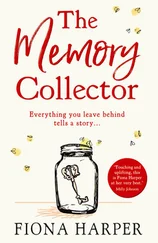And yet, making what works for the user doesn't mean simply making what the user tells you to. Users don't know what all the choices are, and are often mistaken about what they really want. It's like being a doctor. You can't just treat a patient's symptoms. When a patient tells you his symptoms, you have to figure out what's actually wrong with him, and treat that.
This focus on the user is a kind of axiom from which most of the practice of good design can be derived, and around which most design issues center.
When I say that design must be for users, I don't mean to imply that good design aims at some kind of lowest common denominator. You can pick any group of users you want. If you're designing a tool, for example, you can design it for anyone from beginners to experts, and what's good design for one group might be bad for another. The point is, you have to pick some group of users. I don't think you can even talk about good or bad design except with reference to some intended user.
You're most likely to get good design if the intended users include the designer himself. When you design something for a group that doesn't include you, it tends to be for people you consider less sophisticated than you, not more sophisticated. And looking down on the user, however benevolently, always seems to corrupt the designer. I suspect few housing projects in the US were designed by architects who expected to live in them. You see the same thing in programming languages. C, Lisp, and Smalltalk were created for their own designers to use. Cobol, Ada, and Java were created for other people to use.
If you think you're designing something for idiots, odds are you're not designing something good, even for idiots.
Even if you're designing something for the most sophisticated users, though, you're still designing for humans. It's different in research. In math you don't choose abstractions because they're easy for humans to understand; you choose whichever make the proof shorter. I think this is true for the sciences generally. Scientific ideas are not meant to be ergonomic.
Over in the arts, things are different. Design is all about people. The human body is a strange thing, but when you're designing a chair, that's what you're designing for, and there's no way around it. All the arts have to pander to the interests and limitations of humans. In painting, for example, all other things being equal a painting with people in it will be more interesting than one without. It is not merely an accident of history that the great paintings of the Renaissance are all full of people. If they hadn't been, painting as a medium wouldn't have the prestige it does.
Like it or not, programming languages are also for people, and I suspect the human brain is just as lumpy and idiosyncratic as the human body. Some ideas are easy for people to grasp and some aren't. For example, we seem to have a very limited capacity for dealing with detail. It's this fact that makes programming languages a good idea in the first place; if we could handle the detail, we could just program in machine language.
Remember, too, that languages are not primarily a form for finished programs, but something that programs have to be developed in. Anyone in the arts could tell you that you might want different mediums for the two situations. Marble, for example, is a nice, durable medium for finished ideas, but a hopelessly inflexible one for developing new ideas.
A program, like a proof, is a pruned version of a tree that in the past has had false starts branching off all over it. So the test of a language is not simply how clean the finished program looks in it, but how clean the path to the finished program was. A design choice that gives you elegant finished programs may not give you an elegant design process. For example, I've written a few macro defining macros that look now like little gems, but writing them took hours of the ugliest trial and error, and frankly, I'm still not entirely sure they're correct.
We often act as if the test of a language were how good finished programs look in it. It seems so convincing when you see the same program written in two languages, and one version is much shorter. When you approach the problem from the direction of the arts, you're less likely to depend on this sort of test. You don't want to end up with a programming language like marble.
For example, it is a huge win in developing software to have an interactive toplevel, what in Lisp is called a read-eval-print loop. And when you have one, this has real effects on the design of the language. It would not work well for a language where you have to declare variables before using them. When you're just typing expressions into the toplevel, you want to be able to set x to some value and then start doing things to x. You don't want to have to declare the type of x first. You may dispute either of the premises, but if a language has to have a toplevel to be convenient, and mandatory type declarations are incompatible with a toplevel, then no language that makes type declarations mandatory could be convenient to program in.
To get good design you have to get close, and stay close, to your users. You have to calibrate your ideas on actual users constantly. One of the reasons Jane Austen's novels are so good is that she read them out loud to her family. That's why she never sinks into self-indulgently arty descriptions of landscapes, or pretentious philosophizing. (The philosophy's there, but it's woven into the story instead of being pasted onto it like a label.) If you open an average "literary" novel and imagine reading it out loud to your friends as something you'd written, you'll feel all too keenly what an imposition that kind of thing is upon the reader.
In the software world, this idea is known as Worse is Better. Actually, there are several ideas mixed together in the concept of Worse is Better, which is why people are still arguing about whether worse is actually better or not. But one of the main ideas in that mix is that if you're building something new, you should get a prototype in front of users as soon as possible.
The alternative approach might be called the Hail Mary strategy. Instead of getting a prototype out quickly and gradually refining it, you try to create the complete, finished product in one long touchdown pass. Countless startups destroyed themselves this way during the Internet Bubble. I've never heard of a case where it worked.
What people outside the software world may not realize is that Worse is Better is found throughout the arts. In drawing, for example, the idea was discovered during the Renaissance. Now almost every drawing teacher will tell you that the right way to get an accurate drawing is not to work your way slowly around the contour of an object, because errors will accumulate and you'll find at the end that the lines don't meet. Instead you should draw a few quick lines in roughly the right place, and then gradually refine this initial sketch.
In most fields, prototypes have traditionally been made out of different materials. Typefaces to be cut in metal were initially designed with a brush on paper. Statues to be cast in bronze were modelled in wax. Patterns to be embroidered on tapestries were drawn on paper with ink wash. Buildings to be constructed from stone were tested on a smaller scale in wood.
What made oil paint so exciting, when it first became popular in the fifteenth century, was that you could make the finished work from the prototype. You could make a preliminary drawing if you wanted to, but you weren't held to it; you could work out all the details, and even make major changes, as you finished the painting.
You can do this in software too. A prototype doesn't have to be just a model; you can refine it into the finished product. I think you should always do this when you can. It lets you take advantage of new insights you have along the way. But perhaps even more important, it's good for morale.
Читать дальше












